I wandered the narrow alleys of Bari Vecchia during my spring holiday and somehow found myself on the famous “Strada delle Orecchiette.” Here, local women make pasta right on the street, totally unfazed by the world passing by. The April sun felt just right, and I watched as these skilled hands turned nothing but semolina flour and water into Puglia’s signature ear-shaped pasta. Learning to make orecchiette from these women? It’s not just a cooking lesson—it’s a peek into a real Italian tradition that families have handed down for ages.
What really got me was how public this ancient craft is. Pasta-making stations line the street, only steps from the curb. Nonna Angela, one of the pasta masters, waved me over and showed me how to shape the dough using just my thumb and a knife. She made it look effortless, but wow, it’s not.
These women move fast—fingers dancing across wooden boards as they chat with neighbors and tourists. I felt like I was watching a performance, but for them, it was just another day.
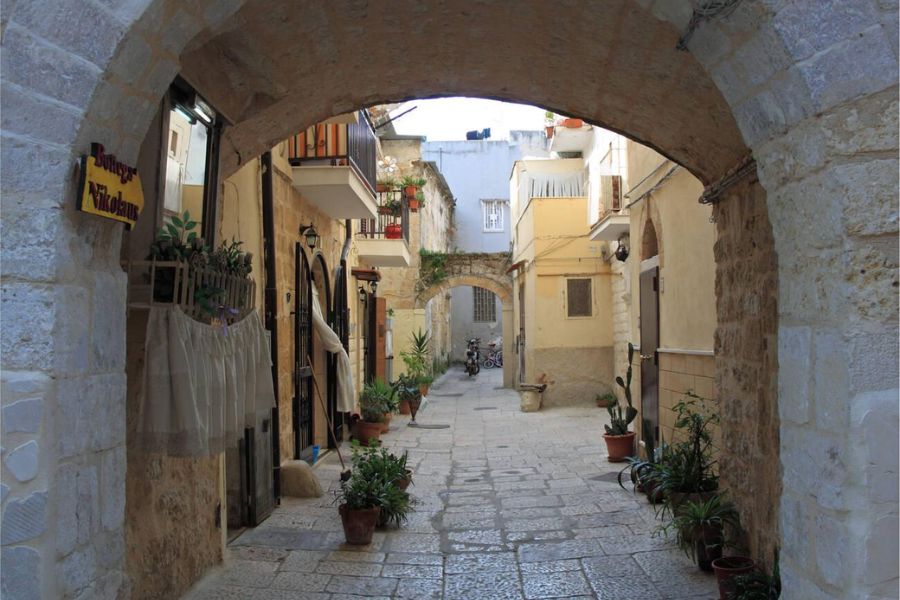
Getting my hands in the dough brought me closer to Italy’s food culture than any restaurant meal ever could. Some locals mentioned worries about recent crackdowns on unlicensed pasta sales, but the tradition still pulses through Bari’s old town. The pasta here isn’t just food—it’s daily life, a living museum of culinary heritage on these ancient streets.
Discovering Bari: A City Steeped in History
Bari surprised me. This coastal city holds over 2,000 years of history, and you can feel the layers—Norman, Byzantine, modern Italian—all mixed together in the buildings and daily life.
Old Town Charms and Local Culture
When I wandered through Bari Vecchia (Old Town), I felt like I’d stepped back in time. Narrow limestone streets twist between whitewashed buildings, and locals chat in doorways or hang laundry overhead.
The Basilica di San Nicola, built in the 12th century, anchors the old town. It holds the relics of St. Nicholas (yep, the Santa Claus one) and draws pilgrims from everywhere.
Life spills out into the streets here. Elderly women sit in doorways, shaping orecchiette by hand. Their speed and precision are kind of mesmerizing.
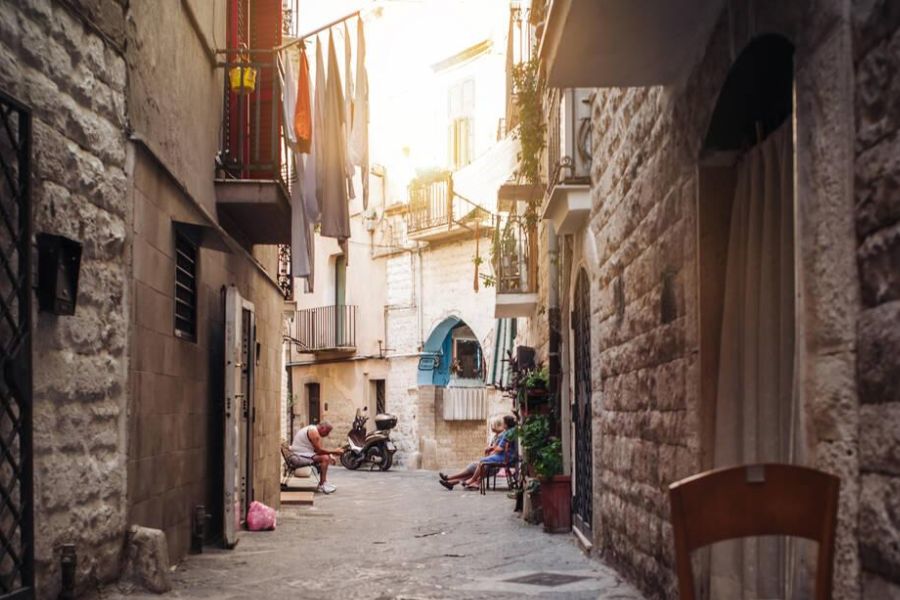
Most of the old town is pedestrian-friendly, so you can explore on foot. Some cobblestone areas might trip up wheelchair users, but the main piazzas are easy to get around.
Bari’s Street Food Scene
Bari’s food scene reflects its port city roots and all the influences that come with it. Street vendors sell sgagliozze (fried polenta squares) and popizze (fried dough balls) from tiny windows in the old town.
Focaccia barese is nothing like the focaccia I’ve had elsewhere in Italy. It’s thick, topped with tomatoes, olives, and a drizzle of local olive oil. I grabbed a slice from a bakery and ate it while people-watching in Piazza Mercantile.
The seafood here blew me away. Fishermen near the harbor sell sea urchins that locals eat raw, just with a squeeze of lemon. It’s a tradition that goes back centuries.
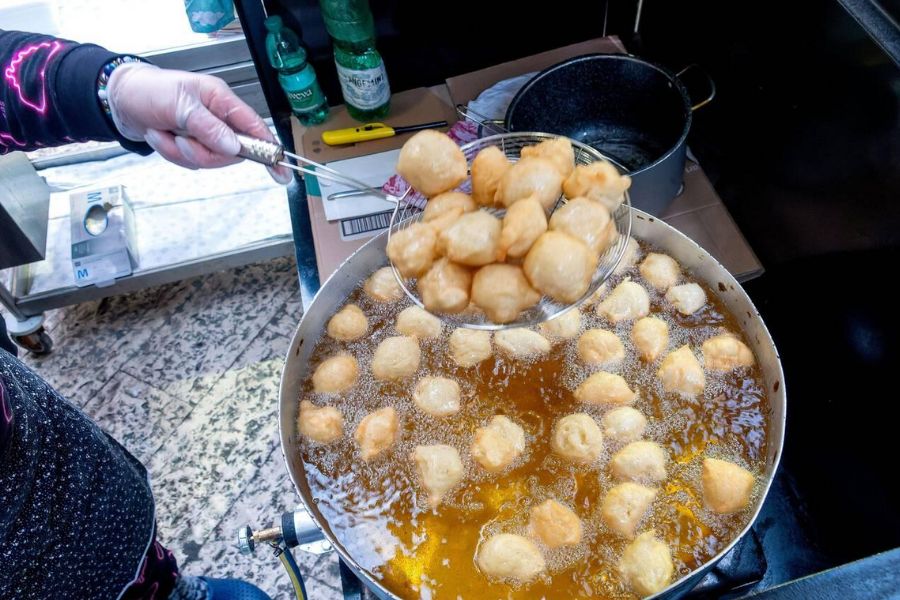
Food prices are pretty friendly, especially compared to bigger Italian cities. You can get a quick street food lunch for around €5-7, which is perfect if you want real flavors without splurging.
Meeting the Masters: Learning from Nonna on the Backstreets
The backstreets of Bari hold a treasure trove of culinary tradition. Women have made pasta by hand here for generations. My hunt for real orecchiette took me into these winding alleyways where pasta-making happens right out in the open.
Finding the Perfect Pasta Teacher
I got a little lost in Bari’s maze of streets until I found “Strada delle Orecchiette”—literally, Orecchiette Street. Women sat outside their doors on small wooden chairs, fingers flying as they shaped dough.
“Buongiorno,” I called out to an older woman whose hands never stopped moving. She introduced herself as Nonna Maria and smiled, patting the chair beside her.
We didn’t share much language, but she gestured for me to join her. Pasta turned out to be its own kind of language. Her setup was simple: a table, a knife, and a wooden board with grooves worn deep from years of use.
The street buzzed with daily life—neighbors chatting, kids running around, tourists gawking. This wasn’t a formal class; it was just life.
Tradition, Language, and Hospitality
Nonna Maria’s technique looked easy, but wow, it isn’t. She rolled the dough into pencil-thin tubes, then dragged each piece across the board with her thumb to make those classic ear shapes.
“Piano, piano,” she’d remind me when my attempts turned out lumpy and weird. Slow down. Take your time.
I couldn’t get over how public this all was. While other culinary arts hide in kitchens, orecchiette-making in Bari plays out right on the street.
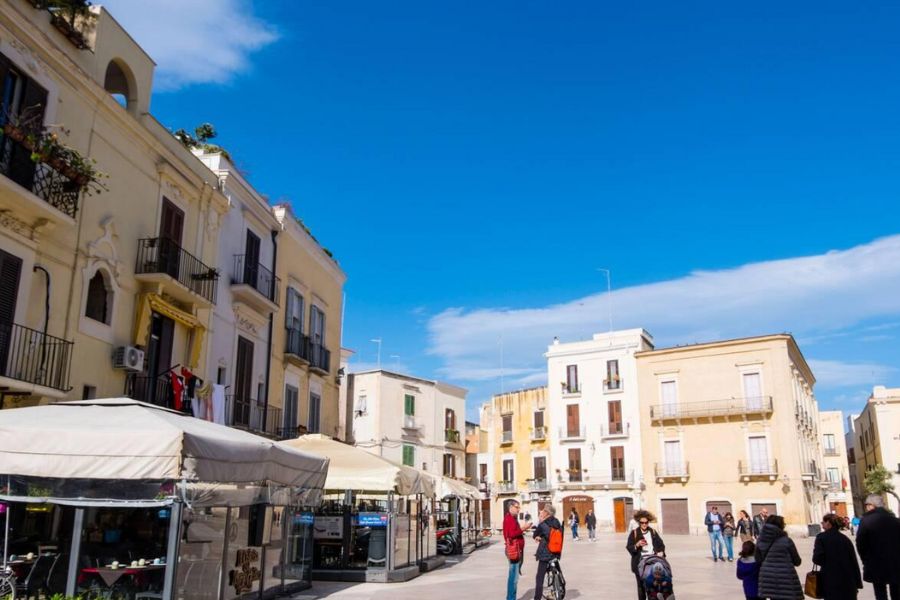
Even with the language gap, Nonna Maria’s warmth came through. She insisted I take home my awkward pasta shapes along with some of her perfect ones. “Pratica,” she winked. Practice.
In just a few hours on that backstreet, I picked up more than pasta skills—I saw a living tradition that’s kept families and communities close for ages.
The Art of Crafting Orecchiette by Hand
Learning to make orecchiette in Bari felt like unlocking a secret. The pasta ladies on the backstreets showed me how to use simple ingredients and quick hands to shape those iconic “little ears.”
Step-By-Step Orecchiette Making Techniques
You start with a clean workspace and a pile of semolina flour mixed with water and a pinch of salt. I made a well in the center and slowly added water until the dough came together. The ladies made it look like a breeze!
After kneading the dough for about 10 minutes, you let it rest under a cloth for 30 minutes. Then comes the fun part—cutting small pieces from a dough rope and dragging each one across the board with a knife or your thumb.
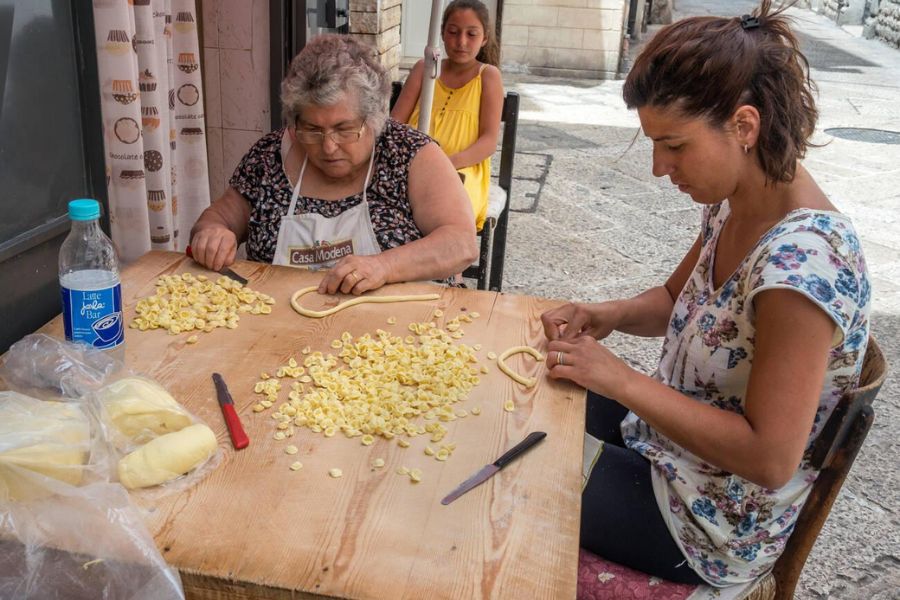
That dragging motion gives orecchiette their classic curve. With a quick flip, each piece gets its signature dimple. My first few tries looked ridiculous, but by the twentieth, I finally saw the shape.
Essential Ingredients from the Bari Markets
Bari’s markets have everything you need for real orecchiette:
- Semolina flour: Coarse and golden, it gives the pasta its bite
- Sea salt: Just a pinch, straight from the Adriatic
- Water: Nothing special, just room temperature
I was surprised by how short the ingredient list is. No eggs, no oil—just three basics. The quality really matters, though. The pasta ladies swear by local durum wheat semolina for its color and nutty flavor.
I picked up my supplies at the Mercato di Santa Scolastica, where vendors proudly show off their local products. Some have supplied the pasta makers for decades.
Tips for Replicating the Experience at Home
To bring Bari’s orecchiette magic home, you’ll want:
- A wooden board that’s smooth but not too polished
- A butter knife (or the special “coltellino” the ladies use)
- Patience—your first batch will probably look odd!
Dough behaves differently depending on temperature and humidity. If it’s too dry, add water a drop at a time. Too sticky? Sprinkle more semolina.
Shape the orecchiette in small batches and let them dry a bit before cooking. Fresh pasta cooks super fast—just 2-3 minutes in salted boiling water.
The best advice I got: “Let your hands learn.” Muscle memory comes with practice. Now, whenever I make orecchiette at home, my kitchen feels like a Bari backstreet.
Savoring the Flavors: Enjoying Orecchiette with Local Delicacies
After learning to make orecchiette from Bari’s pasta ladies, I couldn’t wait to see how these pasta “ears” paired with local ingredients. Puglia’s food is all about simple, bold flavors that turn humble pasta into something special.

Pairing Orecchiette with Regional Sauces
Orecchiette in Puglia usually teams up with cime di rapa (broccoli rabe), a slightly bitter green that grows everywhere here. Garlic, chili flakes, and a splash of local olive oil complete the dish.
“The shape is perfect,” my host Maria said as she stirred a pot of orecchiette. “The little cups catch the sauce and hold it just right.”
I tried another classic: orecchiette with a rich tomato sauce and tiny meatballs called “polpettine.” The curved pasta cradled the meat and sauce perfectly.
If you love seafood, orecchiette with fresh mussels and clams shows off Bari’s coastal side. The briny flavors work so well with the rustic pasta.
Sampling Focaccia and Other Southern Italian Foods
You can’t leave Bari without trying focaccia barese. It’s nothing like northern focaccia—thicker, softer, loaded with tomatoes, olives, and a good dose of olive oil.
I stopped at Panificio Fiore, where bakers pulled golden focaccia from wood ovens. Warm bread and orecchiette? Yes, please.
Between pasta meals, I snacked on burrata cheese (that creamy mozzarella from nearby farms), taralli (crunchy little rings), and fresh seafood from the morning markets.
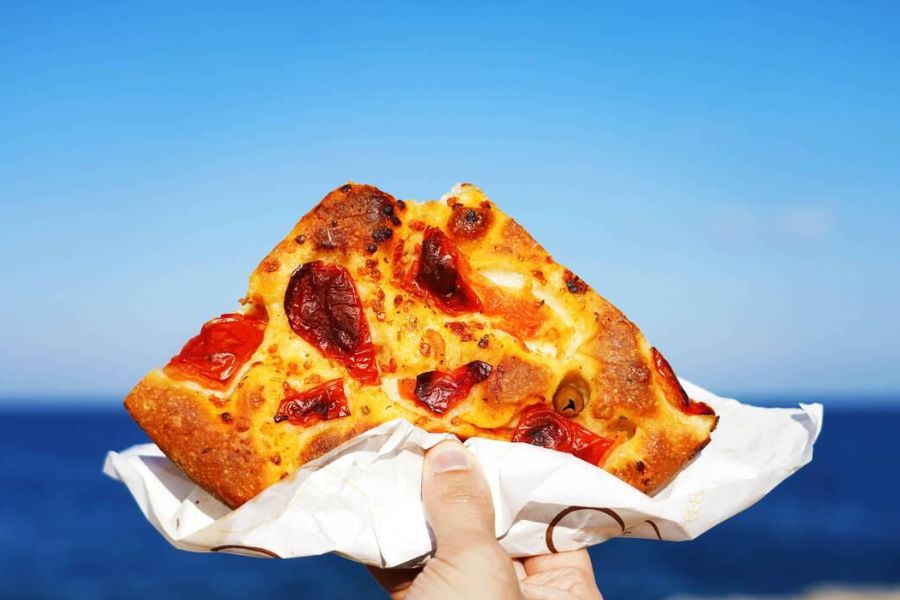
“Food here tells our story,” said Giovanna, a local vendor, with a sly grin. “Simple ingredients treated with respect.”
Street food in Bari adds another layer, with vendors selling sgagliozze (fried polenta squares) and panzerotti (fried calzones). Perfect for a quick bite between bigger meals.
Day Trips and Culinary Adventures Beyond Bari
Bari drew me in with its orecchiette traditions, but the region around it offers even more food adventures if you’re willing to travel a bit. The Amalfi Coast, in particular, is a must if you’re up for the journey beyond Puglia.
Exploring Sorrento, Positano, and Capri
Sorrento was my first stop, just a few hours from Bari by train. The lemon groves here produce the brightest limoncello I’ve ever tasted. I spent a morning at a family-run limoncello workshop, watching how they turn those yellow peels into something magical.
Positano, perched on cliffs, offered more than postcard views. The seafood here is next-level. I ate spaghetti alle vongole at a tiny spot overlooking the water, and honestly, it ruined me for all other clam pastas.
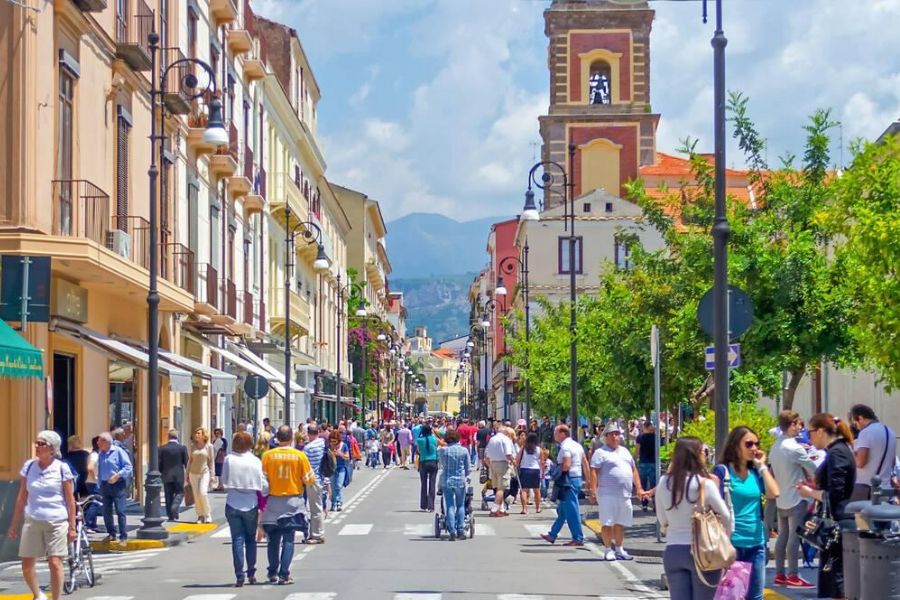
A day trip to Capri brought more surprises than just the Blue Grotto. Ravioli capresi—stuffed with caciotta cheese and marjoram—paired perfectly with local white wine. And the island’s chocolate-almond torta caprese? Don’t skip it.
Navigating Public Transport for Foodies
Getting to these culinary adventures is easier than you’d think. Regional trains run from Bari to Naples often, and tickets cost about €20-30 one way. From Naples, I hopped on the Circumvesuviana train to Sorrento for under €5.
For Positano, I grabbed a SITA bus from Sorrento. The ride along the coastal road is stunning, though it gets packed in summer. Buy tickets early at tobacco shops or train stations.
Ferries to Capri leave from Sorrento all the time. I recommend catching an early boat to beat the crowds and maximize eating time. The round-trip ferry is about €40, but honestly, the food on Capri is worth every cent.
If you’re planning routes, the Moovit app saved me more than once with real-time transport info. Highly recommend it for food-focused travelers.
Sharing the Experience Online: Tips for SEO and Travel Storytelling
Documenting my pasta-making adventure in Bari became almost as fun as the experience itself. Sharing travel stories online takes a bit of strategy and a dash of creativity to really connect with people and capture the vibe.
Optimizing Photos and Videos for Search Engines
I realized fast that search engines love well-tagged photos. So when I uploaded shots of my orecchiette session, I used descriptive file names like “traditional-orecchiette-bari-italy.jpg” instead of random numbers. It made a real difference.
For videos, I picked thumbnails that actually showed pasta-making in action and included keywords in the descriptions: “traditional Pugliese pasta,” “Bari backstreet cooking,” and “authentic Italian cooking class.”
Compressing images before uploading saved my site from slow load times. TinyPNG became my go-to for shrinking files by 60-70% while keeping those pasta details sharp.
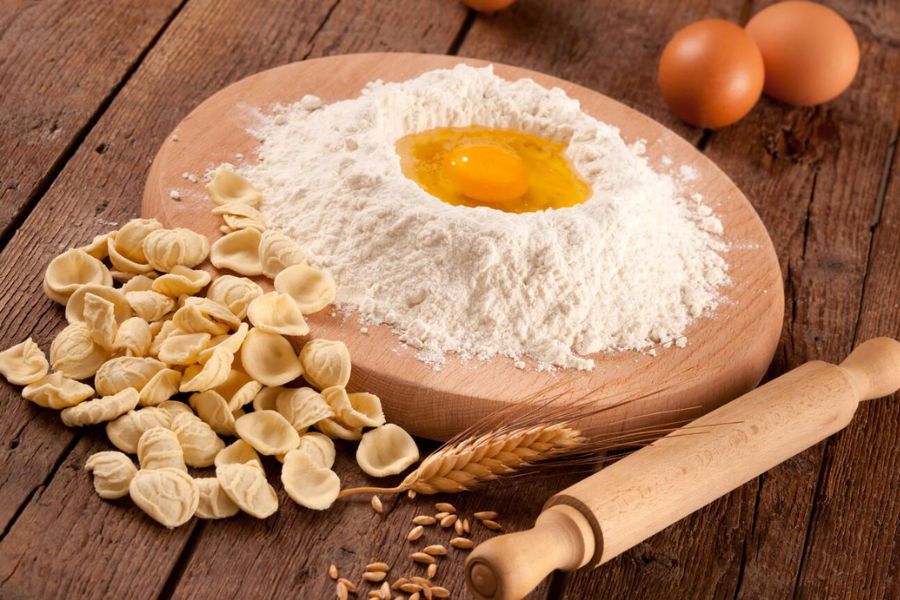
Geotagging photos helped connect my posts to location-based searches, bringing in folks specifically curious about Bari’s food scene.
Crafting Engaging Online Content with Subtitles
My travel stories seem to do best when I break them up into easy-to-scan sections with clear subtitles. Search engines love it, and readers can jump right to what they want.
I found that using questions as subtitles (“What makes Bari’s orecchiette unique?”) really boosted engagement and kept people reading longer. Plus, it matches how people search online.
Adding captions to every photo helps with accessibility and SEO. When I wrote “Local nonna demonstrating the thumb-rolling technique for orecchiette on Via dell’Arco Basso,” both readers and search engines got the picture.
Throwing in Italian phrases with translations (like “Oggi facciamo le orecchiette!”—“Today we make orecchiette!”) added a nice touch of authenticity and made my content stand out.
Measuring Online Performance
Keeping track of what works helps me create better content. Google Analytics showed that my pasta-making stories attract both foodies and travel lovers.
Pinterest drives a surprising amount of traffic to my Bari posts. Tall, vertical pins that show the pasta-making process keep getting clicks months later. I pay attention to which pins work best and make more like them.
I noticed readers spend an average of 4:30 minutes on my orecchiette post—almost double my site average. That tells search engines my content’s worth sticking around for.
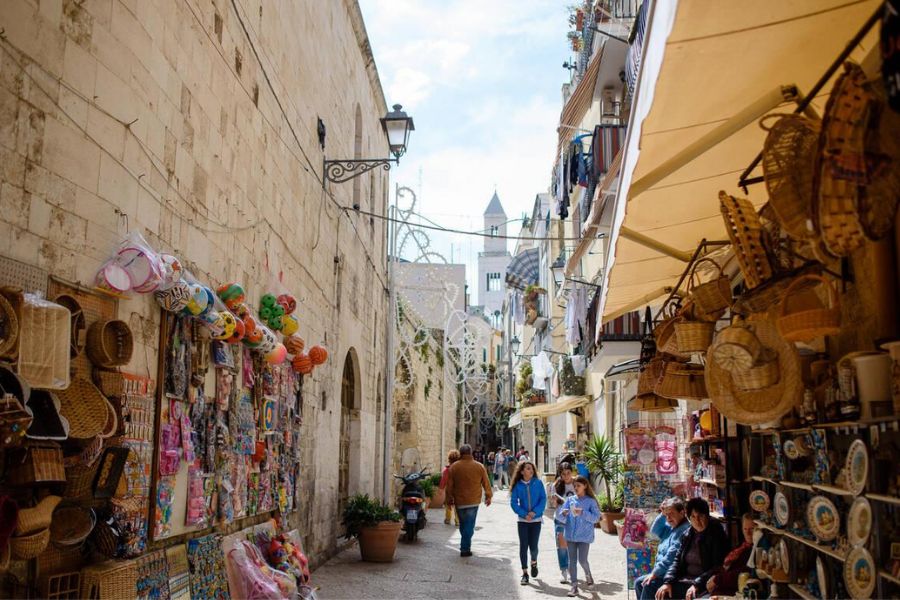
Free SEO tools like Ubersuggest help me find keywords people are actually searching. Adding phrases like “Bari food tour” and “authentic pasta experiences in Puglia” helped my stories reach travelers planning their next trip.

